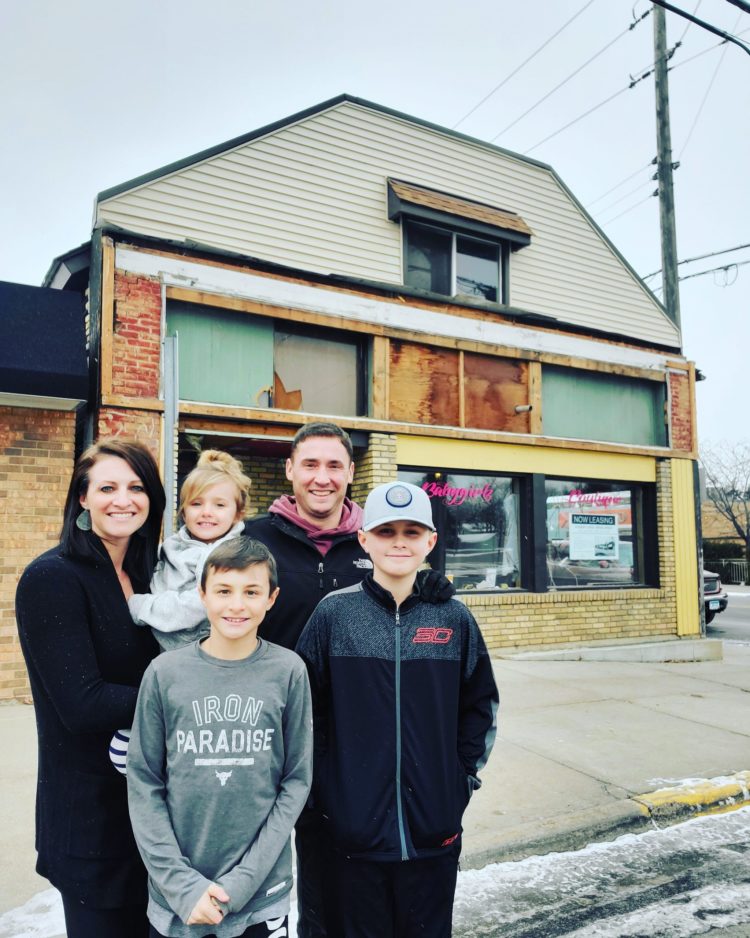by Heidi L. Everett
editor@thenewsleaders.com
As a little girl, Shannon Wiger wanted to be an archaeologist.
She grew up on a farm in Marshall, and every summer a team of archaeology students from the University of Minnesota would journey to the farm fields to dig. They would uncover arrowheads and other artifacts that helped tell the history of the area, she said.
Wiger herself is uncovering artifacts these days. She has a tin of chewing tobacco from 1888 with tobacco still in it, a war bond poster from World War 1, handwritten notes and tools dating back more than 130 years.
She found them dropped in the floor and tucked in the walls of the Bank of St. Cloud building in downtown St. Cloud. The structure, originally built in 1888, is one of seven historic renovation projects Wiger has been a part of in the St. Cloud area.
“Nearly every day that we were demoing, we found something hidden beneath years of renovations,” she said.
Wiger works full time as director of business development for the law firm of Moss and Barnett where she splits her time between the St. Cloud and Minneapolis offices.
Saving old buildings is both a hobby and a passion for this Sartell resident.
Salvage, showcase the past
“I have found that my work on these historic projects brings together three things that I love, history, creativity and doing something for my community,” she said. “I know if these forgotten spaces are not saved now, they will be gone forever – and along with it, the history and stories of that time.”
She started in historic renovation nearly a decade ago on the former Davidson Opera House, St. Cloud, by helping a colleague identify historic tax credits and better understand how those tax credits can make historic renovation projects feasible.
“It is often less expensive, and certainly less risky, to build a new building,” she said. “When you dig into an old building, you don’t know what you are going to find. Along with uncovering beautiful historic features, we also often find significant problems and challenges.”
Wiger noted you often just cross your fingers and do it, knowing you will have to solve problems as you go. But the risk is worth it for several reasons.
“The amount of waste that goes into tearing down buildings is terrible for the environment,” she said. “And beyond that, many of them, with some care and investment, can see another 100 years of life. For me, it is so rewarding to see these buildings that were so foundational to our community’s history be restored and once again be home to a great business.”
The Bank of St. Cloud building, now home to the Greater St. Cloud Development Corp., Kensington Bank, Initiative Foundation and MC’s Dugout Bar & Grill in downtown St. Cloud, was the first building she co-owned and was a leader in the renovation from start to finish. It’s also her favorite project, so far.
“The Bank of St. Cloud building is roughly 19,000 square feet and was built as the first bank in central Minnesota. When we acquired it, it was in a state of disrepair on the edge of being saved. It needed a lot of work,” Wiger said.
The historical significance of the building demanded it be saved.
“That’s the building where so much of St. Cloud began,” she explained. “It was a bank. People came here from all over the world with dreams of starting a new and better life. Business loans were provided. It was a place of great excitement and hope. Today, nearly all of the vaults, original walls and pillars still remain. The signature of the bank founder is still on the stained glass window, likely from the day it was delivered in 1889. You can stand in that space and feel the energy, hope and sacrifice of everything that went on in those early years.”
The building also was a place of stress and sadness, especially when it failed during the Great Depression, Wiger said.
A woman who stopped by the construction site one day told Wiger of how the bank used to serve chocolate milk to the kids.
“And she remembers distinctly the day the bank failed and what a shock it was to everyone,” Wiger said. “Nobody thought it was possible.”
When the bank failed, the Whitney Building next door, which Wiger renovated this past year, was a place of hope. The founder of the Whitney Lands Co., A.G. Whitney, made countless loans to local farmers in an effort to help them save their farms from foreclosure during the depression.
“We’ve found thank-you letters from families who kept their farms because of A.G. Whitney,” Wiger noted.
When Wiger takes on a renovation, her goal is to salvage and showcase what made the building great in the first place.
“I think some of the most beautiful spaces are 100 years old,” she said. “Great design does not go out of style, like hardwood floors, white trim and high ceilings.”
Every time she looks at a building, she tries to determine which features were original and historically significant. Maybe it’s the floors. Maybe the ceiling height. Maybe there’s an exterior window that was boarded up.
“You’ve got to figure out what was there first and then piece the building’s story back together,” she said.
She leans on local museums, the community and social media to share the renovation story and encourage people to share their memories and photos of the space.
“The collection of stories, photos and memories is a treasure when complete,” Wiger said. “I feel a responsibility to document that and share it.”
The goal, then, is to return the building as close to the original design as possible.
Character and colors are key features to consider.
“Ugly paint and terrible design choices often cost the same as timeless design choices,” Wiger said.
Sights in St. Joseph
Today, Wiger is gutting and restoring at the corner of Minnesota Street and College Avenue in St. Joseph.
“Historical records say this building was built in 1900 and was Frank X. Timmer’s Saloon and General Store,” Wiger said. But she’s quick to note that during demo in December, she found a brick with 1898 carved in it.
Based on photos, Wiger believes the upper floors were added much later.
St. Joseph is dear to Wiger. Her family visited often while she was growing up. They attended church in the chapel and had a special relationship with one of the Sisters from St. Benedict’s Monastery, Cathan Culhane. Wiger also graduated from the College of St. Benedict with a Spanish degree and economics minor.
“I love St. Joseph,” she said. “When I’m there, I feel like I’m stepping back in time. Everyone says hello and waves. We play in the parks, go for bike rides and get ice cream.”
Wiger had been looking for a project in St. Joseph for many years. One day she was in the park with her kids and noticed the business on the corner was closing. She ran across the street to get in touch with the current owner, and talked about her passion for historic renovation and love of St. Joseph.
“Initially, he didn’t want
to sell the building, but he changed his mind,” she said
“It was fate and meant to happen. I just happened to be there at the right time.”
In fact, the previous owner of the building is completing the electrical upgrades, and his brother is leading the construction.
Her kids are excited about the project too. Twins Jack and Owen, 9, and little Anne, 4, have been hard at work with the demolition since December.
“It is important to me that my whole family is involved. I want my children to feel the reward of hard work, and also value the people and places that came before them,” she said. “My kids go to town with sledgehammers, pulling through five layers of past renovations. Anne makes piles and then carts her little pieces out to the dumpster. They love St. Jo(seph), too.”
A few weeks ago, Wiger and her family were digging into the tear-down of the front awning and found elements of the original storefront. The discovery was exciting.
“It was unexpected. Some of the glass was still in place,” Wiger said.
Wiger plans to remove layers of stucco and brick and finish the building exterior with wood siding and windows more typical of the era.
“This really is the corner of Main and Main, and this building sets the tone as you turn downtown. I want it to be perfect,” Wiger said. “Most people would’ve just bulldozed this building, and there were days when I wondered if we would have to do that. But we’re going to take it back and make it stunning. The uglier the building, the more I want to tackle it. And this one is really ugly.”
In addition to breathing new life into old buildings, Wiger appreciates meeting other people who are equally enthusiastic about historic renovation, like Stearns History Museum employees who help her track down information about the buildings or craftspeople who specialize in plaster restoration or tuck-pointing brick.
“These are the true artists,” she said.
Wiger also is grateful for a shared love of St. Joseph.
“I can’t even describe how great working with the city of St. Jo(seph) has been,” she said. “It’s so easy, and they are all focused on doing things right and finding creative solutions that drive economic development, yet preserve the charm of St. Jo(seph). “They’ve all been so enthusiastic.”
Wiger has had a lot of interest in the corner building and plans to announce a new business there soon that will bring new jobs to St. Joseph.
“It’s a really special time to join in with the momentum to make St. Jo(seph) grow,” Wiger said. “I hope that in 100 years someone values this work, our collective history and continues this work to care for these important spaces and the history that goes along with them.”

The building currently under renovation at the corner of Minnesota Street and College Avenue in St. Joseph got its start as a saloon.
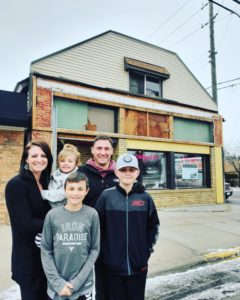
Restoring history is a family affair for Shannon Wiger of Sartell and her family: Anne, 4, twins Owen and Jack, 9, and husband, Nick. After days of demo, they found the original facade on their downtown St. Joseph renovation.

The Wigers bust through drywall during demolition at the corner of College Avenue and Minnesota Street in St. Joseph in December.
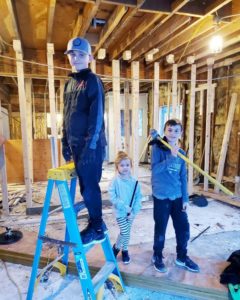
Shannon Wiger’s kids are active in the demolition of building renovations. (Left to right) Jack, 9, Anne, 4 and Owen, 9, at the property in St. Joseph.
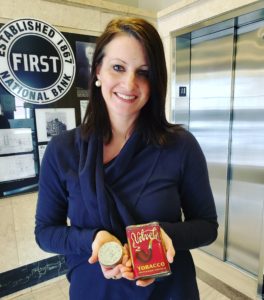
On historic renovations, Shannon Wiger collects artifacts found in floors and walls, like these tins of tobacco from the late 1800s with tobacco still in them.
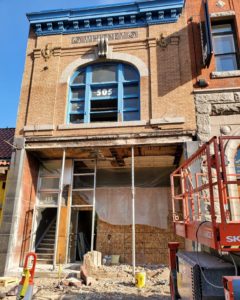
The Whitney Building in downtown St. Cloud is one of seven building renovations completed by Shannon Wiger of Sartell.
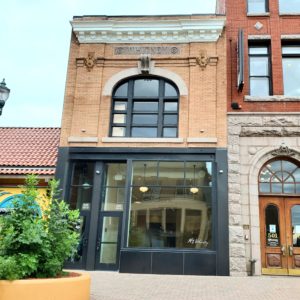
The Whitney Building in downtown St. Cloud following building renovations completed by Shannon Wiger of Sartell.



